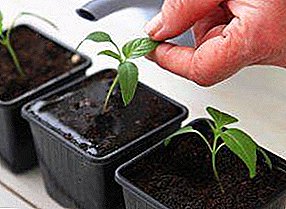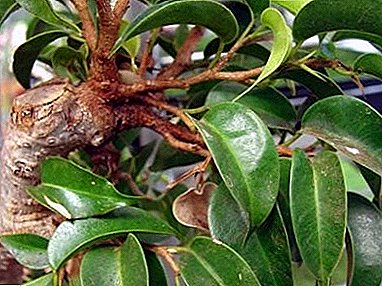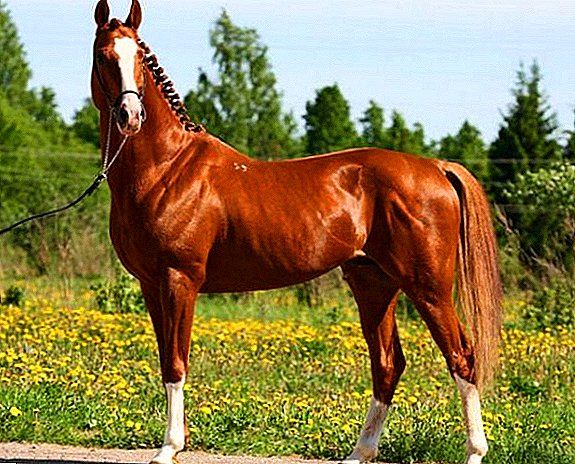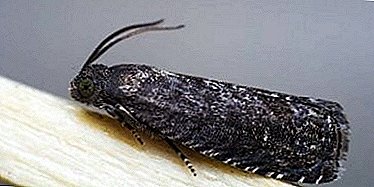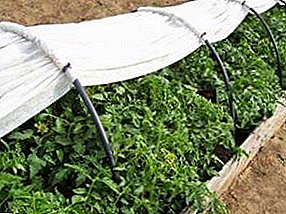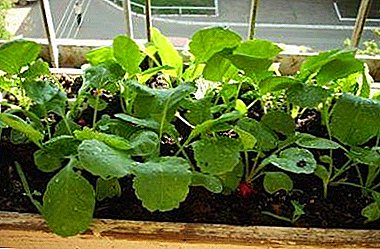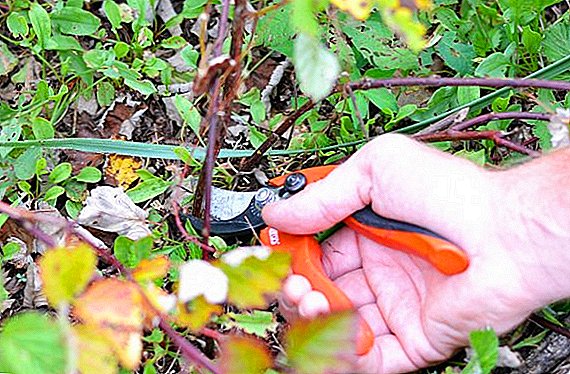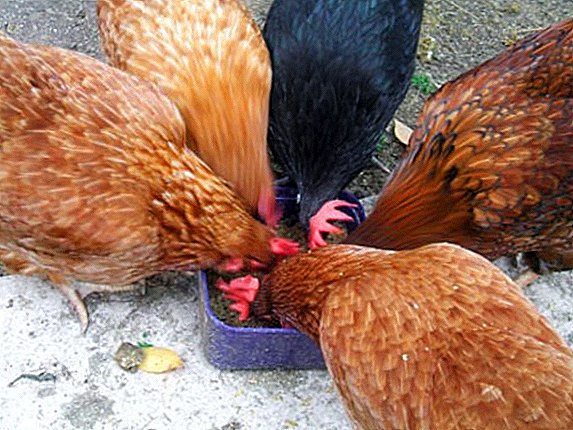 Novice poultry farmers often think about the possibility of feeding birds with pea pellets when thinking about the diet of domestic chickens. Undoubtedly, peas are a valuable food product for humans, but not everyone knows whether it is useful in the diet of birds. The fact whether it is possible to introduce it into the grain mixtures for chickens, in what quantity and when, is described in the article.
Novice poultry farmers often think about the possibility of feeding birds with pea pellets when thinking about the diet of domestic chickens. Undoubtedly, peas are a valuable food product for humans, but not everyone knows whether it is useful in the diet of birds. The fact whether it is possible to introduce it into the grain mixtures for chickens, in what quantity and when, is described in the article.
Is it possible to feed laying hens with peas?
Laying hens are not only possible but also useful to introduce pea groats into the diet. This product is the most valuable source of carbohydrates and proteins, as well as a number of amino acids, micro and macro elements, vitamins.
Peas, along with the rest of the legume (actually beans, lentils and beans), is a powerful stimulator of egg-laying in chickens, because it is especially useful to give it in the autumn-winter period to maintain the productivity of laying hens.
We recommend to read about what should be included in the diet of chickens, what to feed the laying hens, how much feed you need to lay the hen per day, how to feed the chickens in winter for egg production.
Do they eat it
As you know, chickens feel very bad taste of food. That is why they can peck something inedible and even dangerous (which explains the high percentage of chickens poisoned by household pesticides and toxins).  Pea groats are eaten by feathery as well as any other leguminous crops, especially in the mixers and dry cereal mixtures.
Pea groats are eaten by feathery as well as any other leguminous crops, especially in the mixers and dry cereal mixtures.
Did you know? Chickens (like most birds) have only 30 taste receptors, while humans have about 10 thousand. However, the primacy in the number of taste receptors belongs to the soma, in which there are more than 100 thousand of them and they are located not only in the area of the mouth, but throughout the entire surface of the body.
How to give peas
Now it is necessary to figure out how and when you can enter the cereal in the diet of birds. After all, the benefits of the product may vary significantly for different ages due to the characteristics of the digestive system. The digestibility of raw and processed peas is also different. 
How to give
Initially, it is necessary to introduce pea groats in steamed or cooked form, since it is in this form that the product is better absorbed and less irritating to the walls of the digestive tract.
Read more about whether it is possible to give the chickens bread, salt, oats, garlic, meat and bone meal and foam.
Before feeding, grits need to be poured with hot water for several hours, and then boil over low heat until softened. When the birds get used to the product, you can switch to raw, uncooked cereals.
From what age
Peas for egg and broiler breeds can be introduced from the first days of life, along with other cereals. But for chickens, it must be necessarily boiled or steamed, and its quantity in the diet should not exceed 8-10%. Small feathered it should be given in the composition of the wet mash in the shredded form.  In the diet of adult chickens, the amount of the pea component can reach 20% - but only on condition that special enzyme preparations are introduced with it to increase digestibility. If they are not used, the pea content in the feed should also not exceed 10%.
In the diet of adult chickens, the amount of the pea component can reach 20% - but only on condition that special enzyme preparations are introduced with it to increase digestibility. If they are not used, the pea content in the feed should also not exceed 10%.
Important! In peas, as in other legumes, there are anti-metabolic factors that prevent normal digestion, assimilation of beneficial substances and the availability of amino acids. Therefore, it is recommended to feed it only after pre-treatment with enzyme preparations.
Composition and useful properties
The amount of protein in peas is 2-3 times higher than that in cereals, so for chickens, peas are the main source of vegetable protein, which is the main building material of cells and tissues.  The following nutrient groups are present in this product:
The following nutrient groups are present in this product:
- vitamins: B1, B2, B4, B5, B6, B9, E, PP, biotin;
- macronutrients: potassium, silicon, phosphorus, magnesium, calcium, chlorine and sodium;
- trace elements: cobalt, manganese, iron, molybdenum, copper;
- 12 irreplaceable and 88 irreplaceable amino acids;
- Omega-3 and Omega-6 fatty acids;
- saturated, monounsaturated and polyunsaturated fatty acids.
Did you know? The number of chickens on the planet is almost 4 times the number of people - currently about 30 million birds on Earth.
In addition, peas are an extremely nutritious product with a high energy value - 100 g contains almost 300 kcal. 
The introduction of peas in the diet of birds has a lot of positive effects:
- regular consumption eliminates the lack of a number of minerals, vitamins and amino acids (including essential);
- egg production increases;
- adding peas reduces feed consumption, in particular, the amount of meat and bone meal and fish meal, soybean meal - the most expensive components of the feed;
- the condition of an epithelium, feathers improves;
- normal functioning of the cardiovascular and digestive systems;
- normalizes redox processes in the body;
- increases the immune defense and resistance of the body;
- peas contribute to a mild detoxification of the liver and kidneys.
Learn how to breed worms for chickens, as well as how to make a mash for chickens.
Moreover, not only the grain itself has useful properties, but also all parts of the plant: you can cook green fodder from it, harvest hay and silage. Therefore, peas can be called a truly universal and very valuable culture in the poultry industry. 
Contraindications and harm
As stated earlier, the harm can be expected from feeding the cereal in its raw form, if previously birds did not receive it. Also, be sure to comply with the norms for adults and young animals.
In case of improper processing or its absence, peas can cause heaviness in the stomach, disrupt digestion; while its beneficial substances will not be available for assimilation.
It will be useful for you to read about what types of feed for chickens exist, as well as how to prepare feed for chickens and for adult birds with your own hands.
What else can feed chickens
Questions about the possibility of feeding arise not only in relation to peas. A similar interest in poultry farmers arises in relation to other popular products: potatoes, cabbage, fish and beans. Next, consider the possibility of their introduction into the diet and the benefits of such components. 
Potatoes
Potatoes can also be given feathery, as it is a rich source of carbohydrates, trace elements and vitamins, and in addition contributes to the normal operation of the digestive system. Enter it into the diet can be from 2 weeks of age of birds, starting at 100 g per bird per day.
Important! Green skinned potatoes are dangerous for chickens, as it contains poison solanine. Even when boiling, not all of the toxin passes into the water, so you can not feed the green product to the feathered.
Potatoes must first be peeled, boiled and added to the mash. The flesh of the potatoes is absorbed by the birds completely, but the rind is a hard-to-digestible product. 
Cabbage
This vegetable is extremely important in the diet of chickens, especially in winter, when there is a shortage of fresh herbs, and, accordingly, and vitamins.
We advise you to read about what can be given to chickens and what is not, and whether it is possible to give chickens snow instead of water.
Fresh cabbage is the most valuable source of ascorbic acid and potassium, which are necessary for normal functioning of the cardiac system, strong immunity, and body resistance to stressful conditions. The vegetable also contains a whole line of minerals.
In winter, the daily amount of this succulent feed can be 50-100 g per adult. Cabbage can be introduced into the diet from the age of 5 days, raw, finely chopped or rubbed on a grater and mixed with feed.  For kids, the daily dose is as follows: 1 tsp. on 10 individuals not to cause diarrhea. Gradually, the number of vegetables to increase. Adults can be fed fresh cabbage both in the mixers and as a whole - for this, the head of white cabbage is hung in the chicken coop just above the head of the birds, so that they have it in constant access.
For kids, the daily dose is as follows: 1 tsp. on 10 individuals not to cause diarrhea. Gradually, the number of vegetables to increase. Adults can be fed fresh cabbage both in the mixers and as a whole - for this, the head of white cabbage is hung in the chicken coop just above the head of the birds, so that they have it in constant access.
Practice shows that even after a hearty dinner or breakfast, chickens are not averse to feast on juicy vegetables. Usually one medium head is enough for 2-3 days for 10 individuals.
Familiarize yourself with the features of breeding and keeping laying hens, and also find out how long the stress of laying hens lasts, what to do with bird obesity, whether a hen needs a rooster, how a rooster tramples a chicken, what to do if a rooster pecks.
A fish
This product is not only possible, but also should be given to birds to replenish reserves of phosphorus and calcium, without which normal egg-laying and the functioning of the body as a whole are impossible.  When including fish in the diet:
When including fish in the diet:
- the number of eggs and the quality of the shell increases;
- accelerates growth and weight gain;
- bones are strengthened.
Adding fish to food is possible already from 2 weeks of age.
The basic rules for feeding fish:
- Salted, smoked and still somehow processed fish should not be given to chickens.
- It is not recommended to give the product in raw form - the fish must be boiled beforehand to such an extent that all the bones are softened.
- You can give not only the whole carcass, but also the remnants of the table: heads, entrails, skeletons and tails after heat treatment.
- Optimally feed the fish 1-2 times a week, adding it to the masks. With more frequent use of the product may occur dehydration, digestive problems.
 The standard content of fish products in the diet of egg breeds of chickens should not exceed 3-5% of the total mass of daily feed. For meat breeds, an increase in the proportion of fish to 15-18% is possible.
The standard content of fish products in the diet of egg breeds of chickens should not exceed 3-5% of the total mass of daily feed. For meat breeds, an increase in the proportion of fish to 15-18% is possible.Beans
Beans also belong to the list of recommended components in the ration. You can give beans with the rest of the cereals, starting from the first days of the chickens life.
Fundamental rules:
- beans must be crushed;
- it is recommended to boil it before feeding;
- It is necessary to feed the beans in the composition of the mash, where its part is given up to 25%.
You will probably be interested to read about how to properly feed the chickens with grass, as well as how to feed the chickens.
Beans are an excellent product for introducing diversity in the diet of birds, but often they can not be given much. The benefits of this legume plant are the same as of peas - beans are a source of highly digestible plant-derived proteins, essential amino acids.  By consuming beans in laying hens, egg production and egg quality are improved. Summing up, it is safe to say that peas in the feathered ration are an important, useful and necessary product, using which one can achieve an increase in egg production and reduce the costs of some other feeds.
By consuming beans in laying hens, egg production and egg quality are improved. Summing up, it is safe to say that peas in the feathered ration are an important, useful and necessary product, using which one can achieve an increase in egg production and reduce the costs of some other feeds.
However, you should always follow the rules and, despite the benefits of the product, do not abuse them. No less beneficial in the diet of chickens have beans, potatoes, fish and cabbage.


